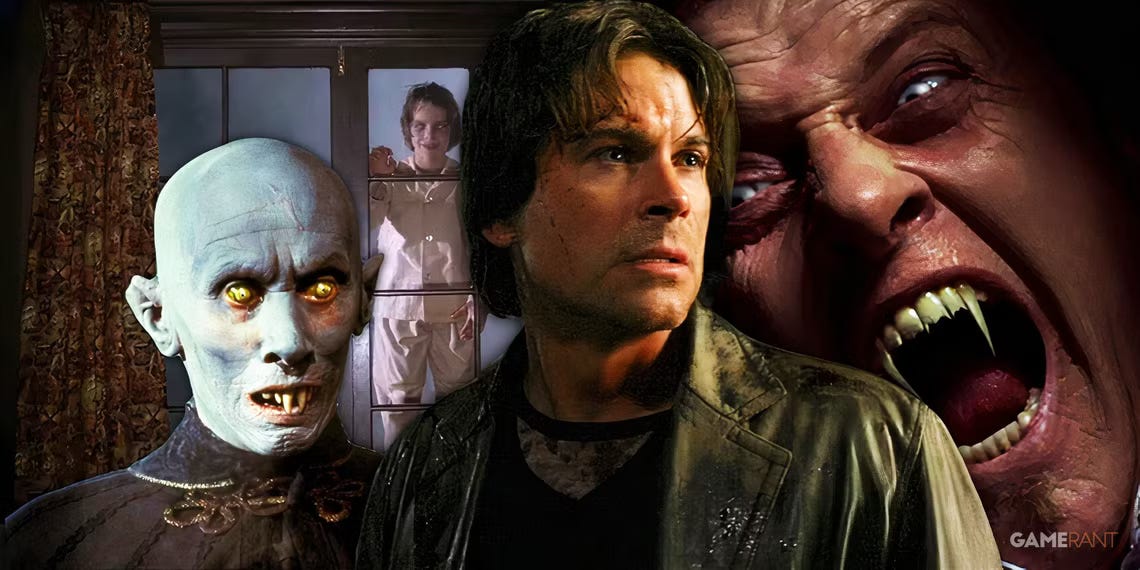This Forgotten Adaptation Of A Stephen King Novel Might Be Better Than The Latest Movie Version
Revisiting a forgotten gem of Stephen King’s Salem’s Lot, the 2004 miniseries stands as a worthy alternative to the recent 2024 film.
Adapting a Stephen King novel can be a daunting task, and the recent reception of Salem's Lot (2024) proves just how tricky it can be. While the latest film iteration received mixed-to-negative reactions, largely due to unfavorable comparisons with the iconic 1979 TV miniseries, there’s another adaptation of the same novel that might have slipped under the radar, but is worth rediscovering.
Published in 1975, Salem’s Lot became a cornerstone of King’s early horror legacy. It was his second novel and also the second to make its way to the screen, following Brian De Palma’s Carrie. While the 1979 miniseries holds a cult following, the 2004 TV adaptation, though often overlooked, deserves a second look.
The 2004 Salem’s Lot: A Unique Take on King’s Classic
When TNT aired a two-part Salem’s Lot in 2004, it offered something different from its predecessors. With a runtime of just over three hours, it felt deeply faithful to King’s novel, and yet was not just a remake. The adaptation featured an all-star cast with Rob Lowe, Donald Sutherland, Samantha Mathis, and Rutger Hauer, all under the direction of Mikael Salomon. The screenplay by Peter Filardi stayed true to King’s original vision, capturing the essence of the small-town horror.
Though the series was far from flawless, with occasional clunky dialogue, rushed pacing, and lackluster visual effects, it still delivered a compelling experience. It added scenes that the 1979 version left out, including the character Dud Rogers and a chilling sequence involving vampire children on a school bus, which enhanced its own distinctive flavor. The cast, while not fully utilized, nonetheless blended well into the era-specific TV tone, providing an interesting contrast to the more polished offerings of today’s film.
What Salem’s Lot is Really About
For the unacquainted, Salem’s Lot is set in the eerie town of Jerusalem’s Lot, Maine—known as ‘Salem’s Lot. The story follows Ben Mears, a writer who returns to his childhood town in search of inspiration, only to find it slowly becoming overrun by vampires. As the town’s residents succumb to these bloodthirsty creatures, Ben teams up with unlikely allies, including Father Callahan and young Mark Petrie, to confront the terror head-on.
The vampires are led by the sinister Kurt Barlow, a creature straight out of nightmare, and his human accomplice Richard Straker. The town eventually plunges into darkness, forcing Ben and Mark to find a way to destroy the vampires before it’s too late. King’s tale of small-town horror stands out for its chilling atmosphere, blending familiar vampire tropes with a new kind of terror that resonated deeply with readers.
What the 2004 Salem’s Lot Got Right
The 2004 miniseries offered several key moments that the 1979 version left behind, including some intense death scenes and its own brand of campy horror. One such standout moment is the death of Jimmy Cody, whose demise is far more gruesome than in the original novel, where he simply falls victim to a set of knives. The miniseries presents a more dramatic scene, involving a circular saw that adds a gritty shock value. Another unforgettable scene features Barlow killing Mark’s mother in the Petrie kitchen, creeping across the ceiling like a demonic insect—a visual that would be difficult to pull off with today’s more restrained horror.
Despite some awkward dialogue, the series’ campy vibe works in its favor. It’s a product of its time, and while it may come off as cheesy, it still delivers on the intense, atmospheric terror that defines King’s work. Performances from the likes of Rob Lowe and James Cromwell might not have reached the iconic heights of earlier versions, but they manage to inject enough gravity into their roles to keep the series grounded.
Comparing the 2004 Miniseries with 1979 and 2024 Versions
While the 2004 version is ambitious, it doesn't match the haunting atmosphere of the 1979 miniseries, which benefited from its more eerie sound design and chilling portrayal of vampires. James Mason’s Straker, for example, is a far scarier figure than Donald Sutherland’s portrayal in 2004. The older adaptation’s Nosferatu-inspired Barlow is more terrifying in its simplicity, while Rutger Hauer’s take in the 2004 version mirrors the book’s Dracula-like character but doesn’t quite carry the same weight.
Ultimately, the 2004 Salem’s Lot miniseries has its flaws, but it also boasts ambition and a unique charm that has only grown with time. Compared to the rushed 2024 Max adaptation, which condensed the original story into just over two hours, the 2004 version’s expansive format provides more room for character development and horror moments.
The two-part Salem’s Lot (2004) is currently available for rent on Apple TV+ and Amazon Prime Video. So if you’re looking to revisit this King classic, it might just be time to give this underrated adaptation a second chance.


